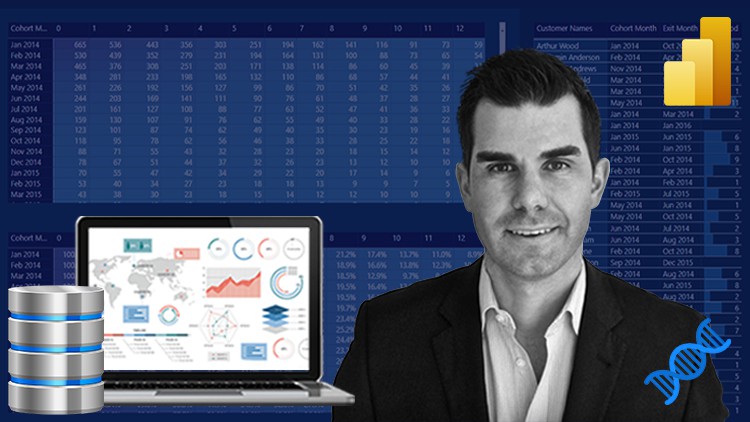
Learn how to clean, optimize and model data tables to develop effective, insightful and actionable Power BI reports
What you will learn
Utilize the query editor to clean up and optimize your raw data tables
Learn the great functionality hidden away in the query editor
Implement advanced transformation techniques to improve your solutions
Organize your queries so you can manage complexity
Manage tables of data from multiple different data sources
Design and execute on an effective data model
Analytical think about your data model and then create the correct relationships
Lay out your data model so it is designed intuitively
Implement data models over unique data scenarios
Description
An outline of this training course
This course covers in detail the query editor and how to develop effective Power BI data models. When starting out with Power BI you can sometimes overlook how important these two areas inside of Power BI are to developing an effective reporting solution. This course makes sure that you can see the immense value of doing work in these areas right can be. Covered are intermediate to advanced techniques that will enable you to optimize your raw data tables and then connect them into a functioning analytical model that you can ultimately overlay DAX formula to and get the correct results, that will answer your analytical questions.
Details of what you will learn during this course
- Learn – best practice techniques when using the query editor
- Learn – how to work with ‘M’ code and the advanced editor
- Understand – the row and column query transformation options
- Implement – advanced data cleaning and transformation techniques
- Work – through end to end examples of querying multiple tables
- Learn – how to think about and manage the data model
- Learn – effective techniques applicable to any data scenario
- Apply – advanced data modeling techniques to your own models
- Understand – advanced modeling scenarios and situations
- Learn – how to effectively organize your models
What you get with the course
- 4 hours of course videos
- Demo dataset and model to practice advanced querying and data modeling with
Testimonials
“From my first days working with Power BI. Sam and Enterprise DNA has been my go-to people for learning about how to do things in Power BI. From modeling to DAX, visualizations to formatting, and publishing reports to creating dashboards and apps.” – Ian Besmond
“I have trawled the internet and tried at least 3 Power BI courses. This is the first one that includes a methodology for Data Modeling and analytics that is intuitive and makes sense. I went from very basic knowledge of Power BI to comfortable with the concept of DAX and setting up attractive reports in 1 day. A course cannot get better than that!” – Karl Griffin
“Sam – you have built an incredible community of people who have become passionate about Power BI. Your videos (both publicly available and commercially available by subscription) are an invaluable tool to BI users at all levels. I learned a ton about proper data modeling for analytics, DAX complex queries, using M-Query, organizing information properly, and much more. I highly recommend the membership – it has proven to be a prudent investment.” – Tiran